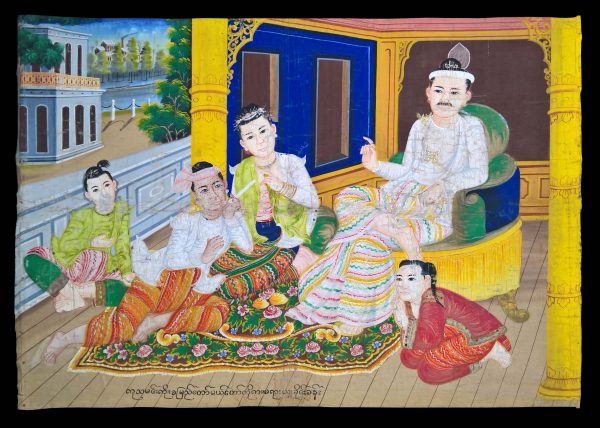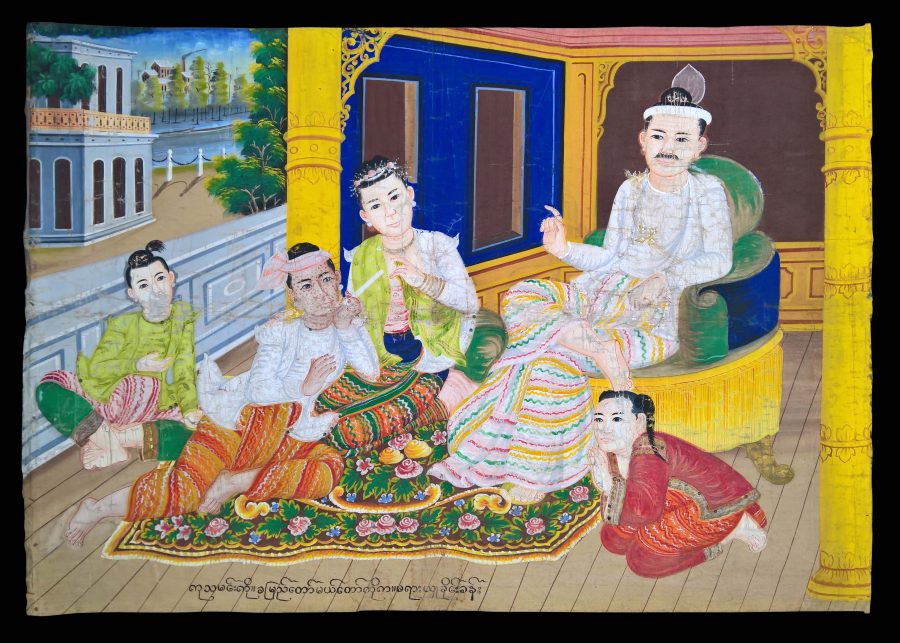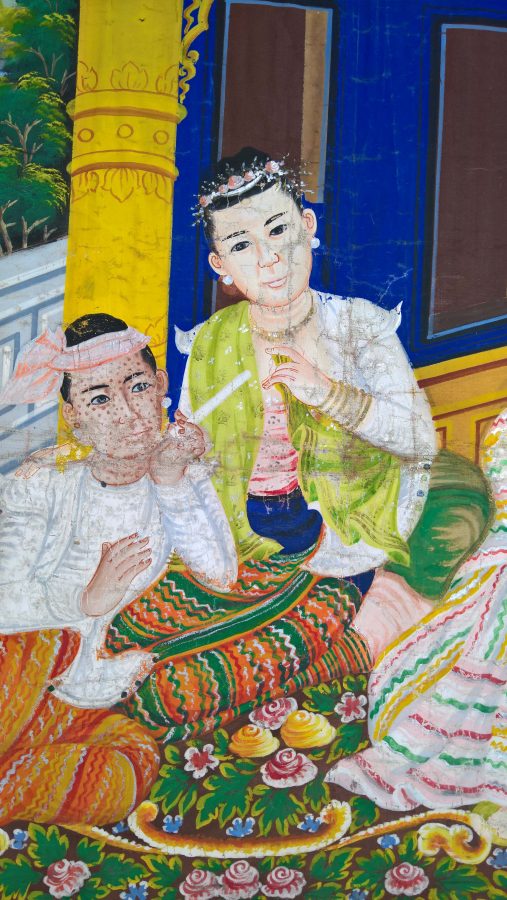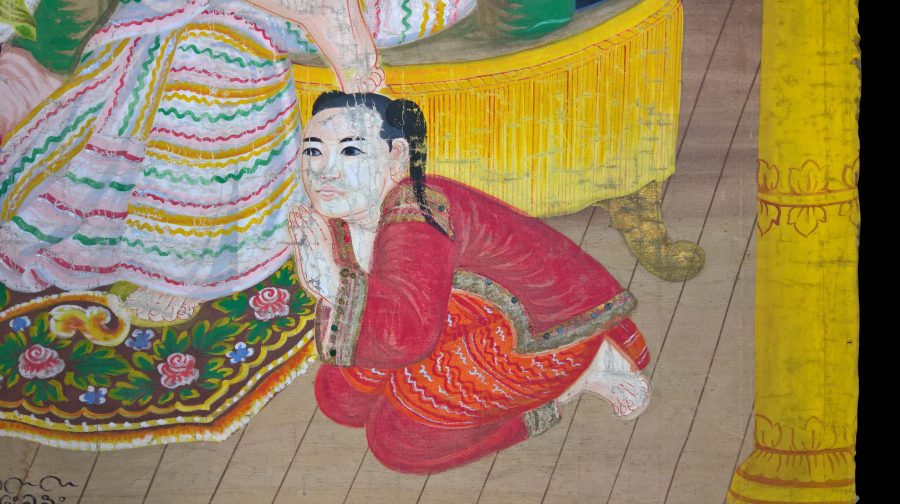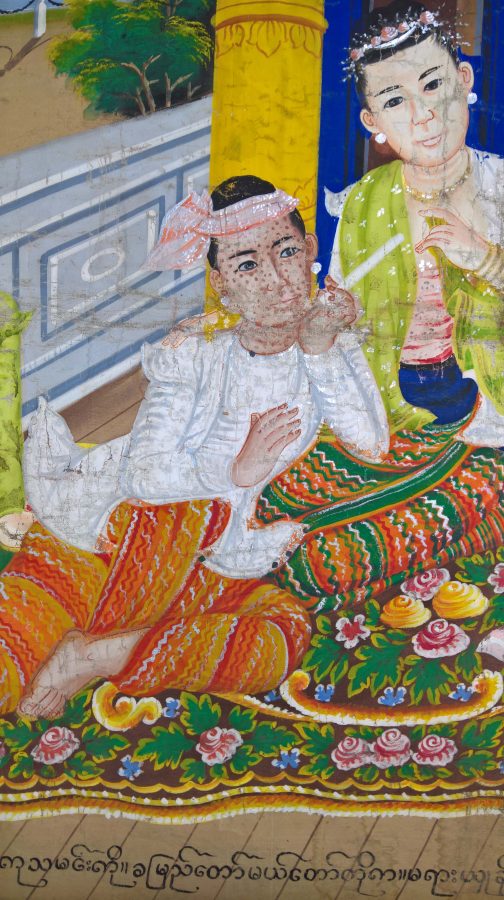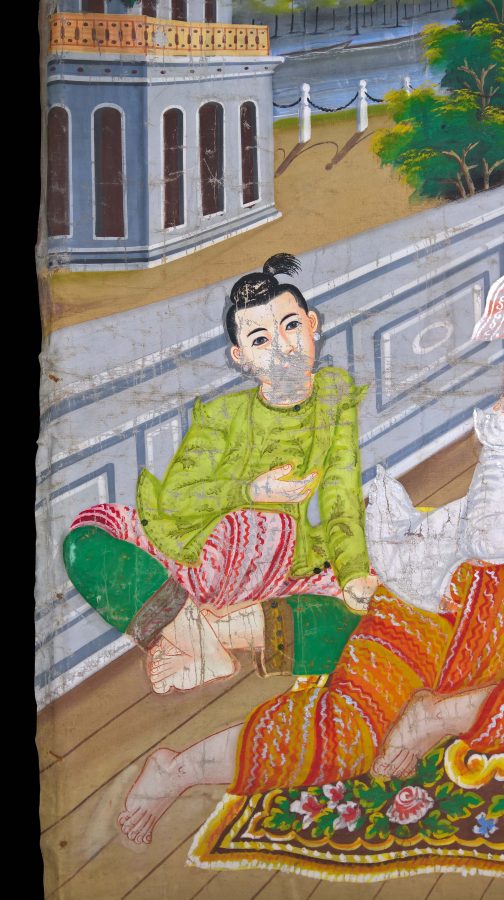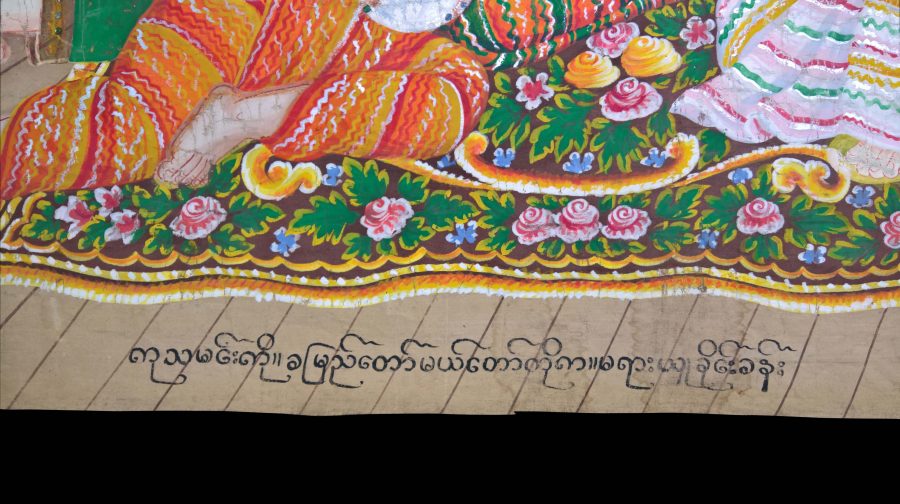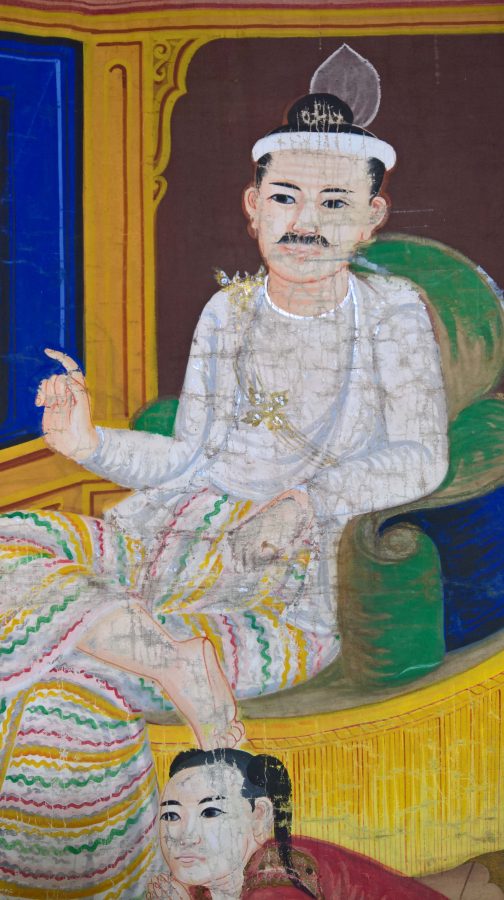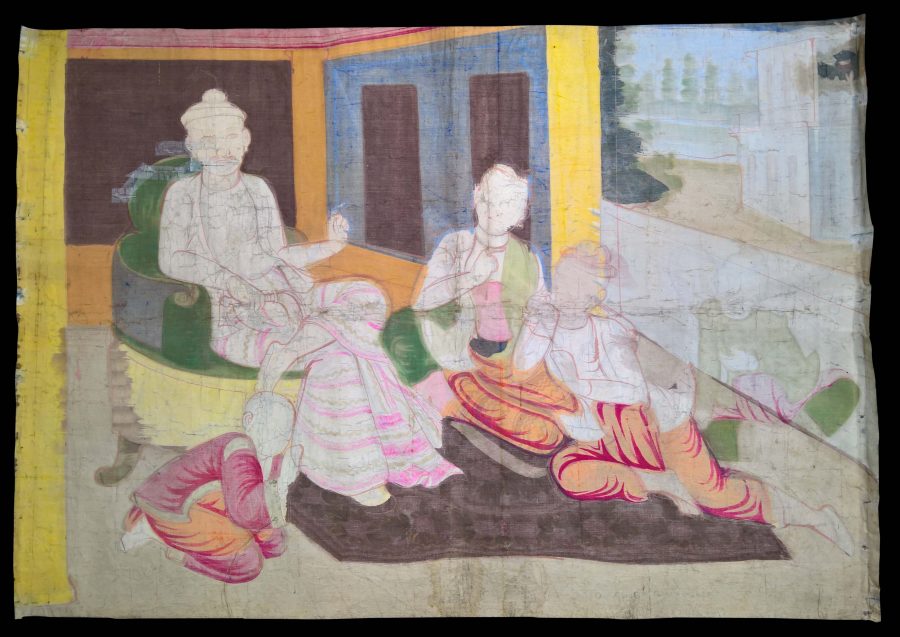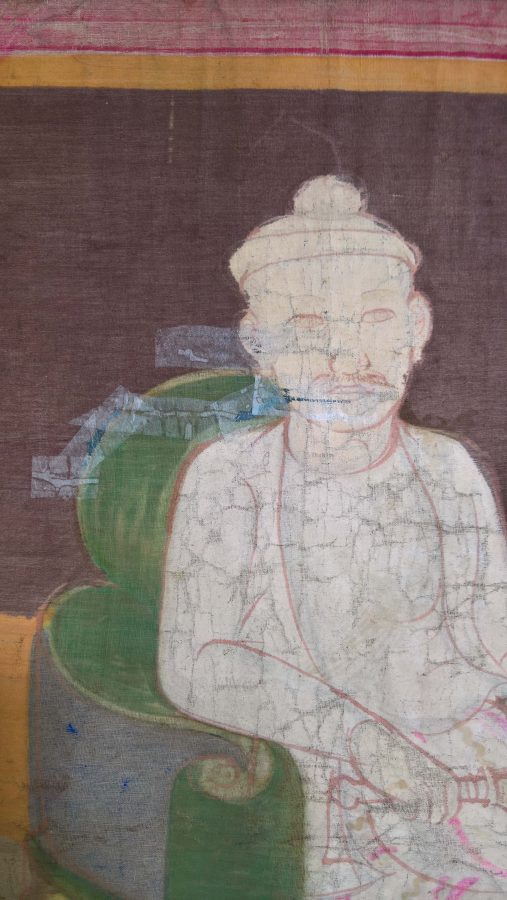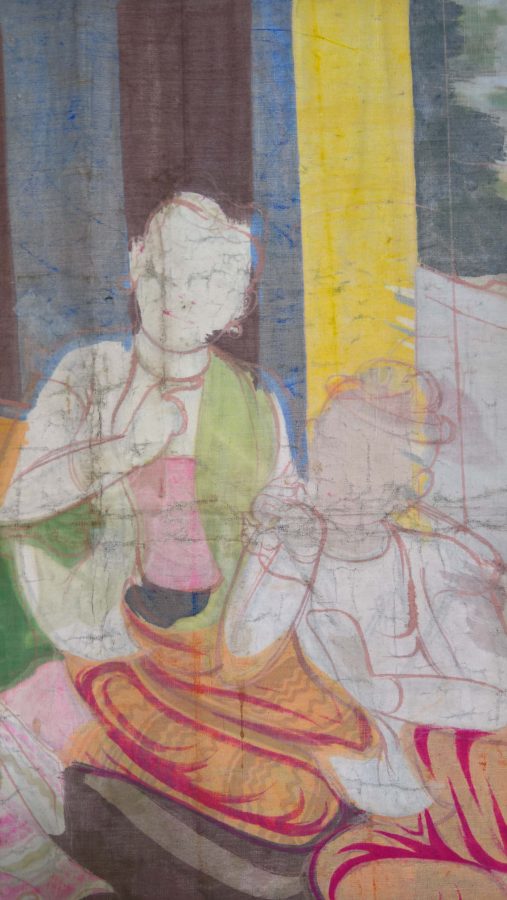This painting, of opaque watercolour on cloth with small applied foil-backed glass roundels to highlight jewellery, shows what is probably a family scene of the Burmese royal family – the king, his wife (or wives) and their children. All wear the garments woven with the wavy achiek pattern which was worn by members of the Burmese royal household. One of the female sitters puffs on a long cheroot. The king wears chains of office over his chest.
A line of neat Burmese script has been painted to the bottom of the picture.
It is possibly by the Mandalay artist Saya Chone (1866–1917) a court painter to King Thibaw. The painting is large. Raynard (2009, p. 30) mentions that most of Chone’s royal family portraits are in the range of 60cm by 60cm, which makes this painting larger than the typical royal family portraits, and that they often incorporate sequins or small stones to serve as highlights.
As Ranard (2009, p. 26) says, Chone and others like him traversed the colonial age. Portraiture became fashionable during the reigns of Kings Mindon and Thibaw. Royal family members, courtiers and aristocrats began to commission portraits of themselves. Saya Chone studied Western styles of portraiture during his time at Thibaw’s court but within three years of Chone’s engagement at court, the King had been deposed by the British. Chone had to find other employment and so began painting portraits of other wealthy patrons as well as scenes around the palace in Mandalay.
The painting has losses to the paint here and there and some minor tears which have been professionally stabilised. Ranard (p. 36) remarks that the condition of the paintings in this genre varies; and that almost none are pristine – the best have small holes here and there. The example here is not framed.
References
Ranard, A., Burmese Painting: A Linear and Lateral History, Silkworm Books, 2009.


